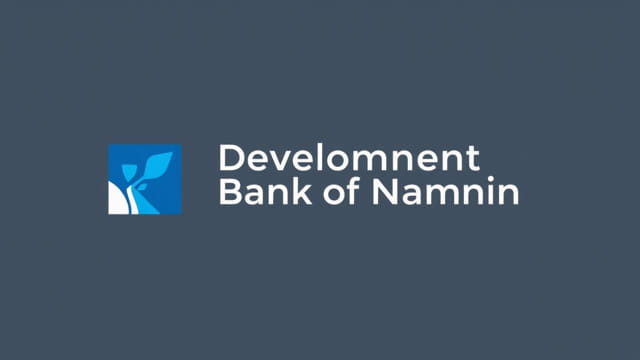Development Bank of Namibia
In Namibia’s ongoing journey toward sustainable economic development, the Development Bank of Namibia (DBN) stands as a cornerstone institution dedicated to financing projects that stimulate growth, create employment, and improve the standard of living across the nation. Established with a mandate to support economic advancement, the DBN plays a vital role in promoting private sector development, infrastructure investments, and entrepreneurship. Whether it’s funding renewable energy projects or supporting small and medium enterprises (SMEs), the bank’s activities are deeply interwoven with Namibia’s national development goals.
Overview of the Development Bank of Namibia
Foundation and Mission
The Development Bank of Namibia was founded in 2004 as a state-owned financial institution. Its primary objective is to provide access to finance for projects that contribute to the country’s economic and social progress. Unlike commercial banks that focus mainly on profitability, DBN prioritizes projects that offer long-term benefits to the Namibian economy, especially in underdeveloped regions and sectors.
Core Functions
The DBN operates as a development finance institution, meaning its key functions include:
- Financing infrastructure such as roads, energy, water, and sanitation
- Supporting business ventures, especially SMEs and startups
- Encouraging industrialization and manufacturing
- Promoting inclusive development through targeted funding
Key Sectors Funded by DBN
Infrastructure Development
Infrastructure is a primary focus for the Development Bank of Namibia. Investments in transportation, housing, and public utilities are essential for stimulating economic activity and improving quality of life. DBN has financed numerous road construction projects, urban housing initiatives, and rural electrification programs, all of which are crucial to Namibia’s Vision 2030 objectives.
Energy and Renewable Resources
Namibia’s push toward energy self-sufficiency and environmental sustainability aligns with DBN’s funding policies. The bank has provided financial backing for solar and wind energy projects, supporting the nation’s transition to cleaner energy sources. These projects not only reduce dependence on imported electricity but also create new employment opportunities in the green economy.
Small and Medium Enterprises (SMEs)
SMEs are the backbone of any economy, and DBN recognizes their role in job creation and innovation. The bank offers tailored financial products for SMEs, including term loans, asset financing, and bridging finance. By reducing financial barriers, DBN empowers local entrepreneurs and enhances inclusive economic participation.
Education and Health
Though not as prominent as other sectors, DBN also contributes to social development through funding for educational institutions and healthcare infrastructure. Projects like the construction of vocational training centers and rural clinics have been supported to promote human capital development.
Financing Solutions and Products
Term Loans
DBN provides medium to long-term loans to projects that demonstrate economic viability and development impact. These loans are typically used for capital-intensive projects such as property development, manufacturing, and large-scale infrastructure.
Bridging Finance
This short-term financing solution helps businesses meet immediate financial needs while awaiting long-term funding or project completion. It is particularly useful for construction firms and businesses involved in phased projects.
Public Private Partnership (PPP) Support
DBN plays a facilitating role in PPPs, offering finance and technical guidance to projects jointly undertaken by the public and private sectors. This approach helps leverage private capital for public infrastructure development, improving service delivery and reducing fiscal pressure on the government.
Development Impact and Achievements
Job Creation
One of the primary indicators of DBN’s success is the number of jobs created through its funded projects. From agriculture to urban development, the bank’s investment activities have supported thousands of jobs across Namibia, contributing to poverty reduction and economic stability.
Regional Development
Namibia’s economic landscape has historically been skewed toward urban centers. DBN actively supports projects in less-developed regions, including the Kavango, Kunene, and Zambezi regions. This decentralized funding approach helps promote balanced regional development.
Entrepreneurial Growth
Through its focus on SME financing, DBN has helped foster a culture of entrepreneurship in Namibia. Many first-time business owners have been able to launch and sustain operations due to the bank’s support, contributing to economic diversification and resilience.
Governance and Oversight
Regulatory Framework
The Development Bank of Namibia operates under the guidance of the Ministry of Finance and is governed by a Board of Directors. Transparency and accountability are key principles, with annual reports published to track financial performance and development impact.
Risk Management
As a development finance institution, DBN takes calculated risks to support high-impact projects. However, it employs robust risk assessment frameworks to evaluate creditworthiness, project feasibility, and economic benefit, ensuring sustainability and loan recovery.
Challenges Faced by DBN
Limited Access to Capital
While DBN receives government backing, its funding capacity is limited compared to the vast development needs of Namibia. There is a growing call for more capital injections, international partnerships, and innovative financing mechanisms to expand the bank’s reach.
Project Viability
Many proposed projects, particularly in rural areas, lack the technical and financial planning required for funding approval. DBN often needs to provide advisory services to help applicants refine their business models and proposals.
Macroeconomic Uncertainty
Factors such as inflation, currency fluctuation, and global market volatility can impact the bank’s operations. These external risks must be carefully managed to ensure long-term financial health and developmental impact.
Future Outlook
Strategic Priorities
Looking ahead, DBN aims to deepen its support for sectors such as agriculture, digital innovation, and climate-resilient infrastructure. The bank is also exploring blended finance options and stronger ties with international development agencies to boost its funding capacity.
Alignment with National Goals
The Development Bank of Namibia is closely aligned with national policies such as Vision 2030 and the Fifth National Development Plan (NDP5). Its role is expected to grow as Namibia strives for industrialization, economic inclusivity, and environmental sustainability.
The Development Bank of Namibia is more than just a lender it is a catalyst for economic transformation. Through strategic investments, strong governance, and a commitment to national development, DBN continues to shape a future where prosperity is accessible to all Namibians. As the nation faces new challenges and opportunities, the bank remains a key player in unlocking Namibia’s full economic potential.
